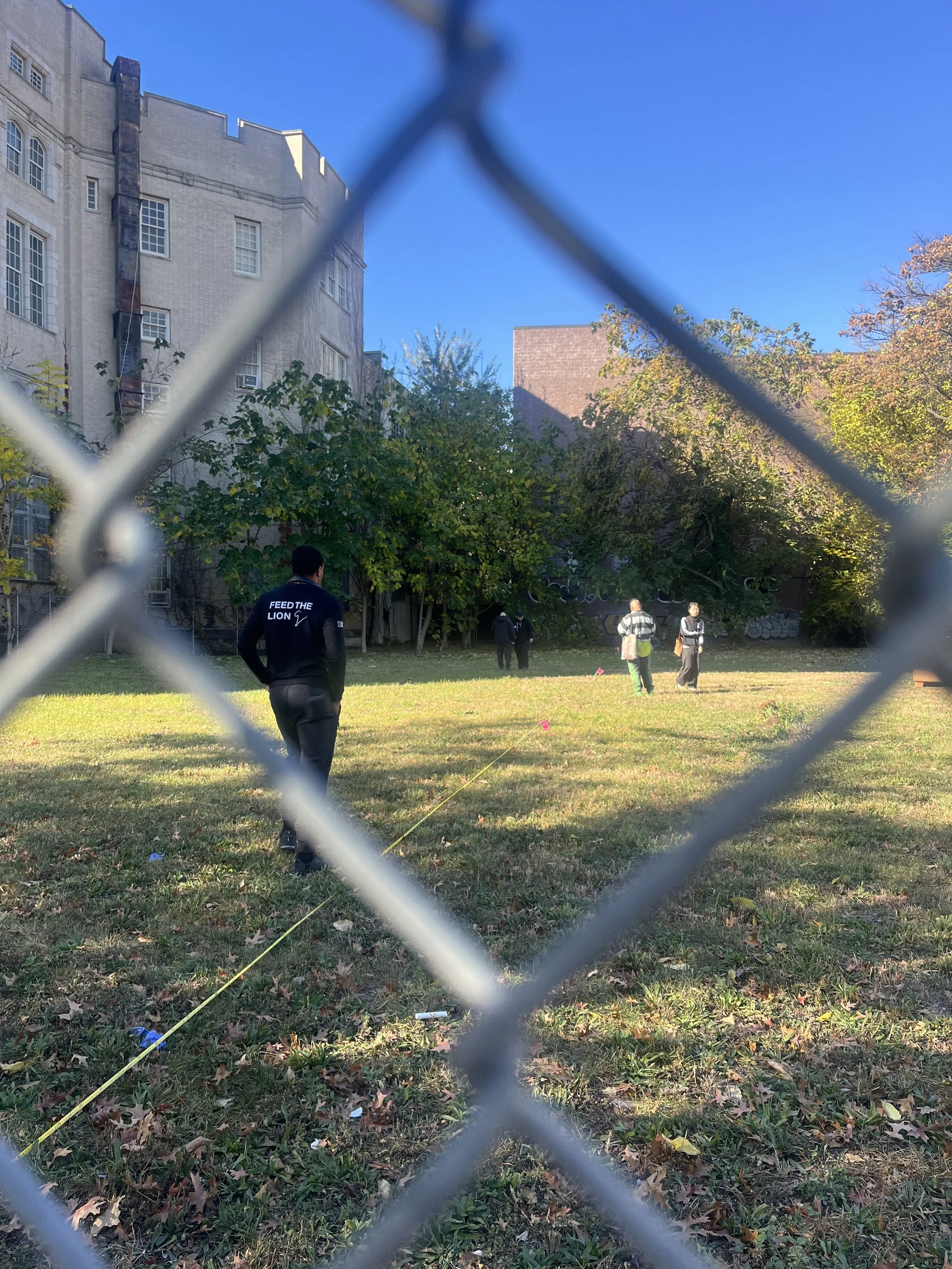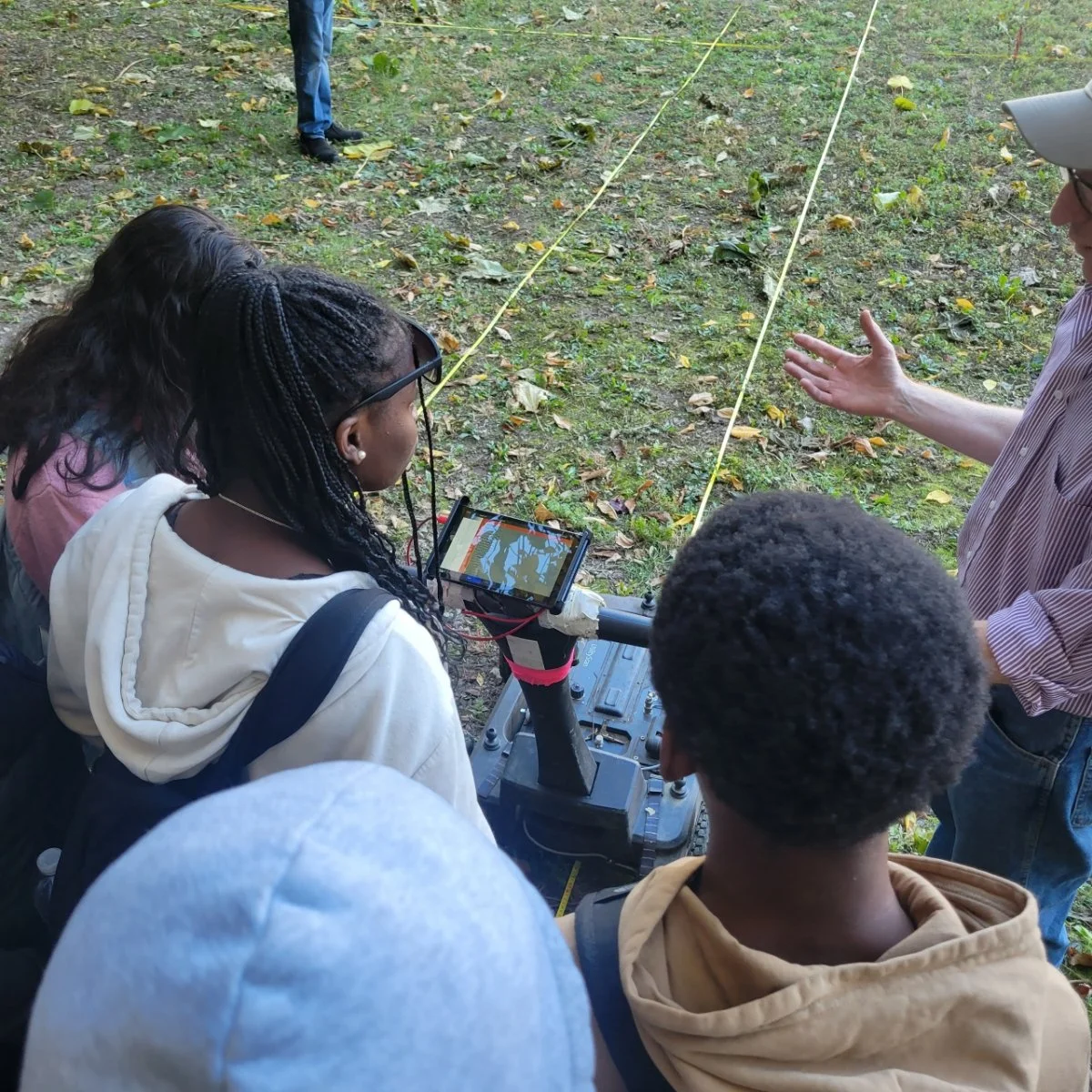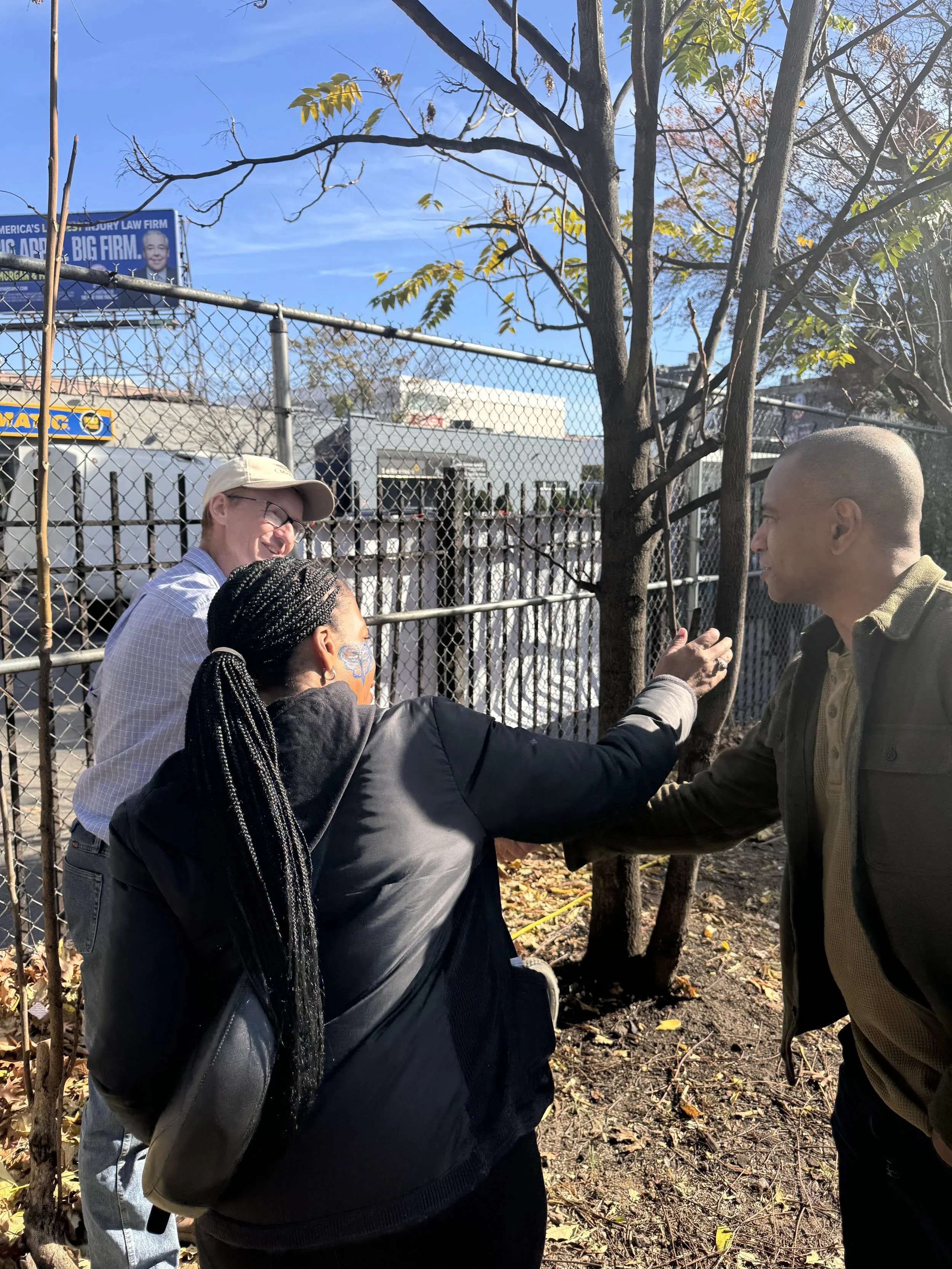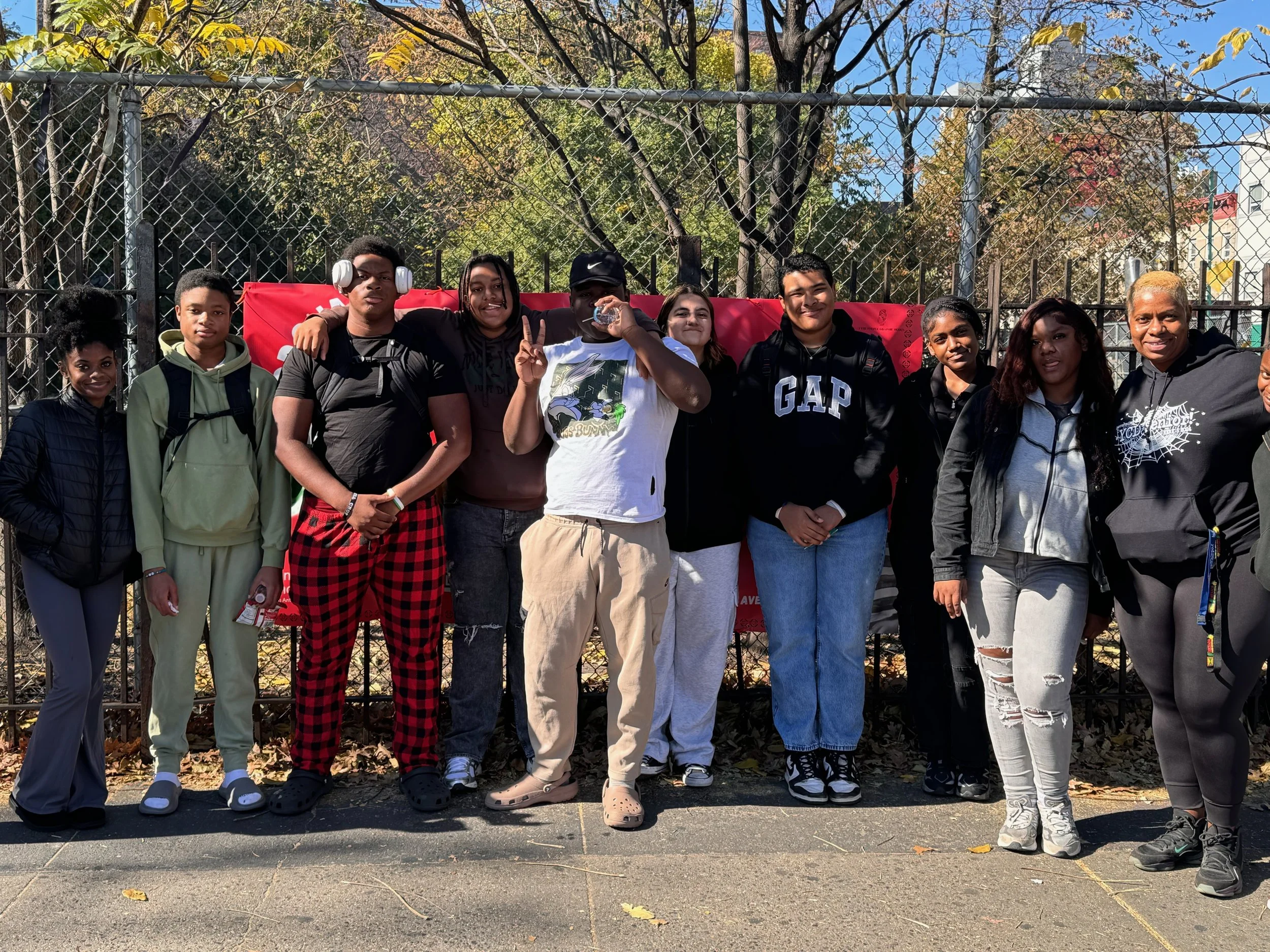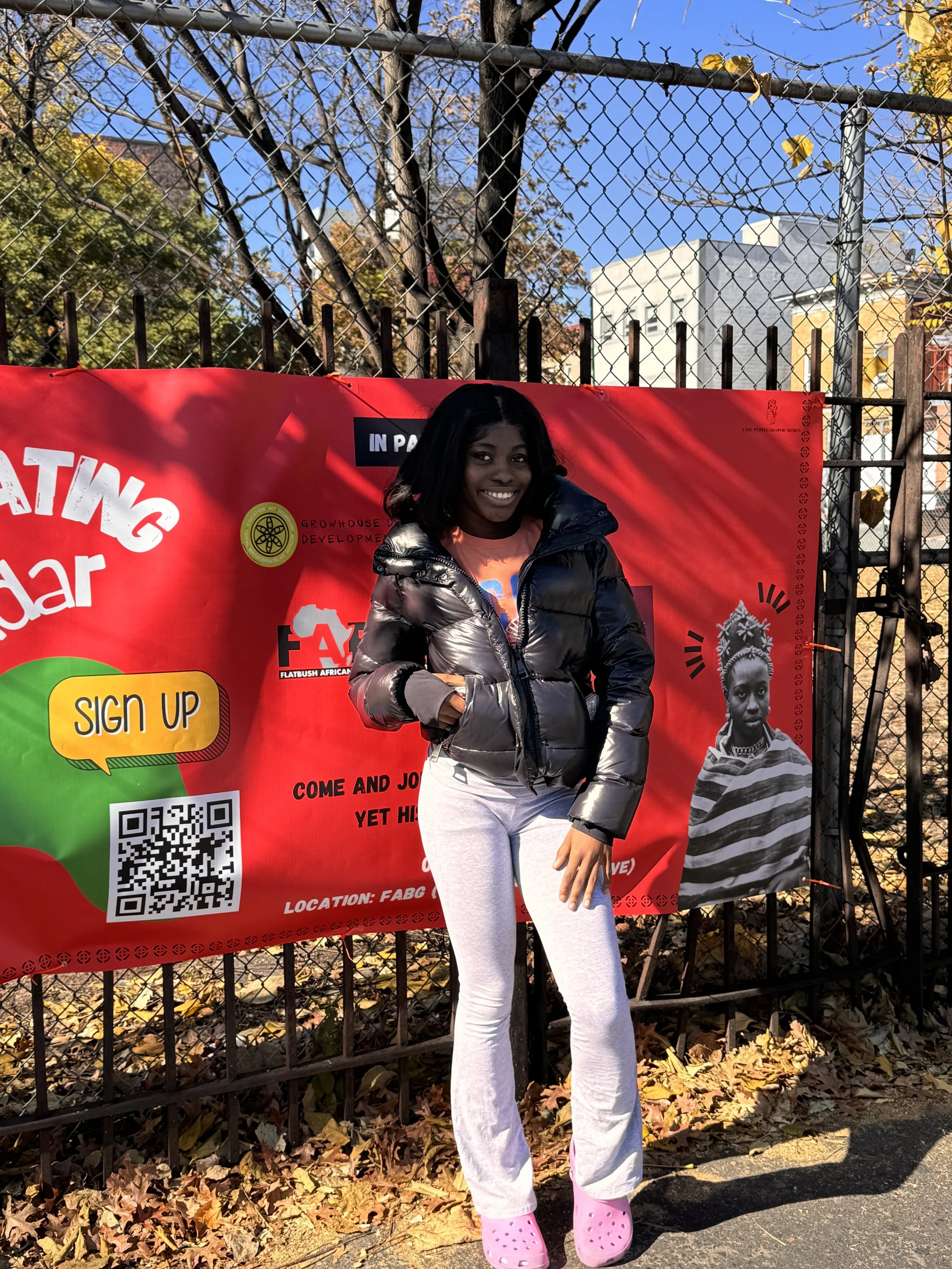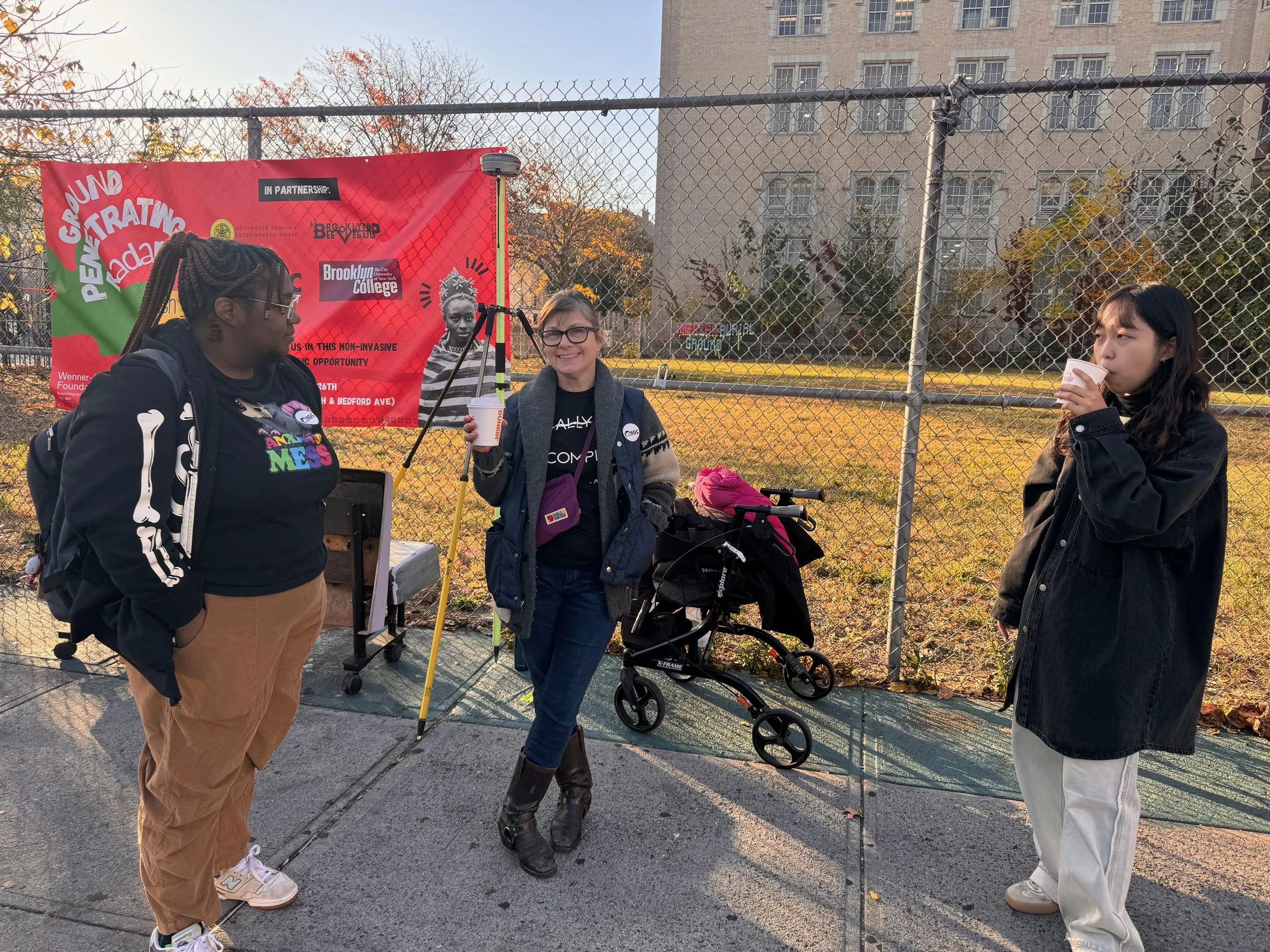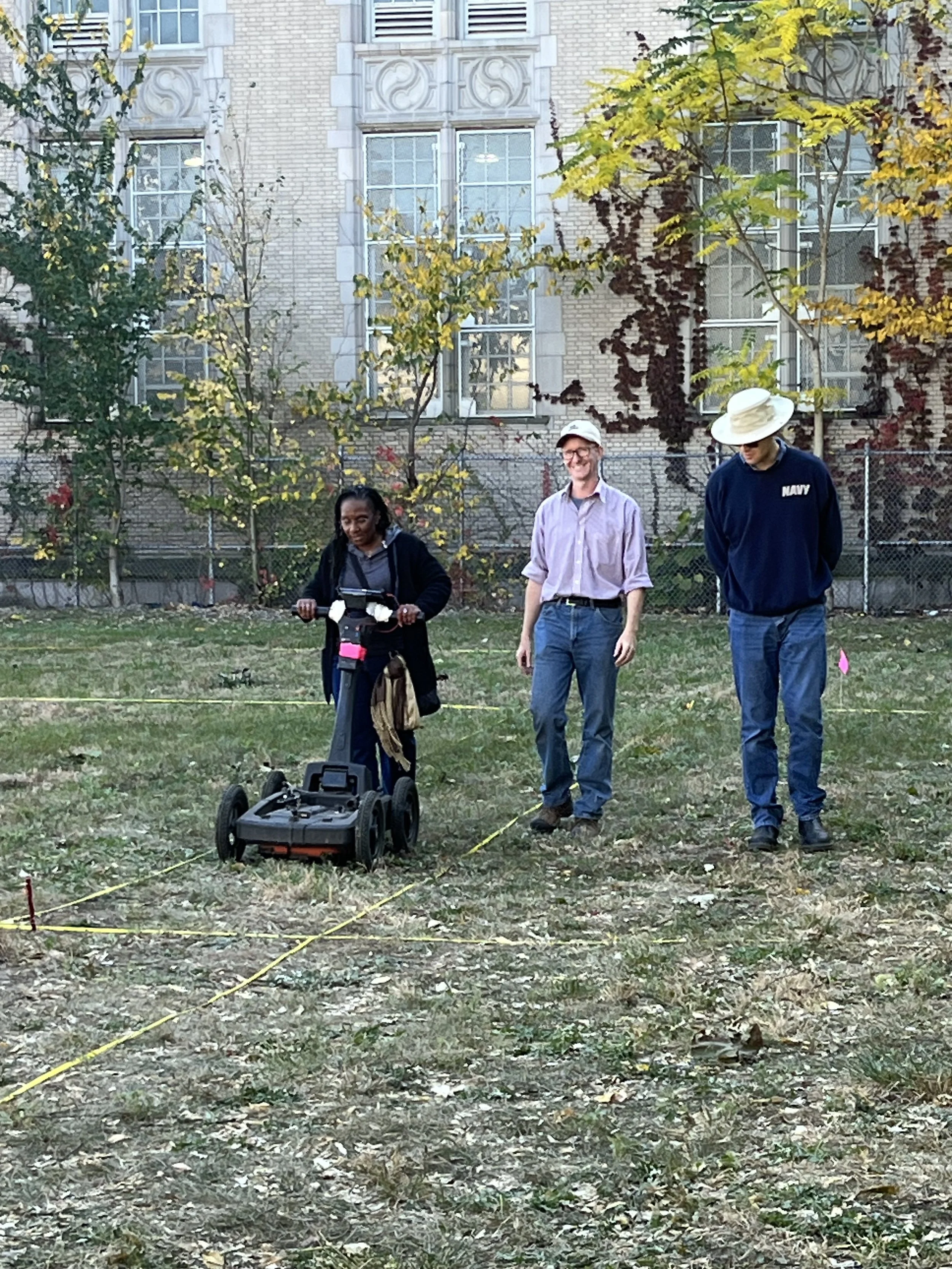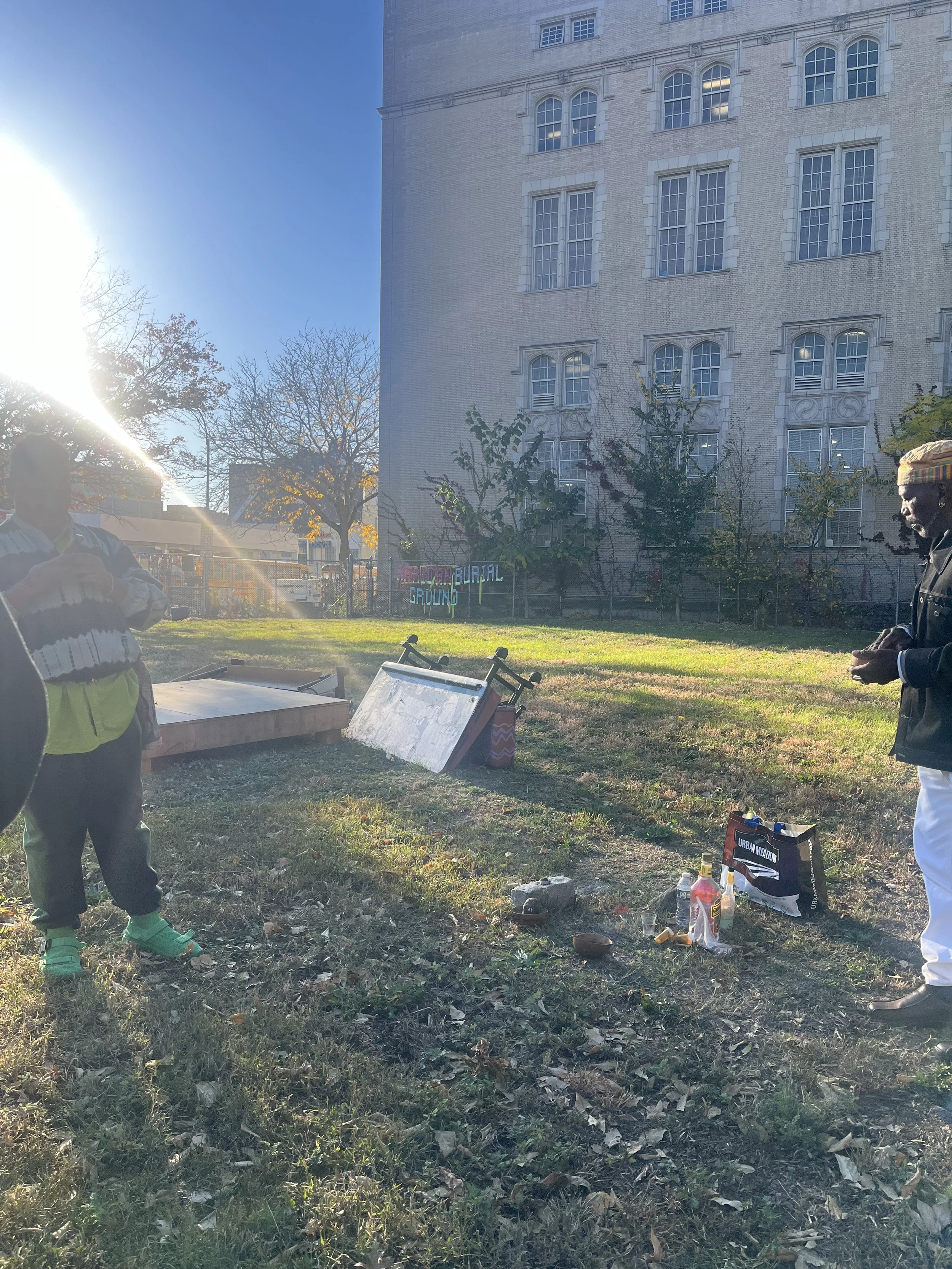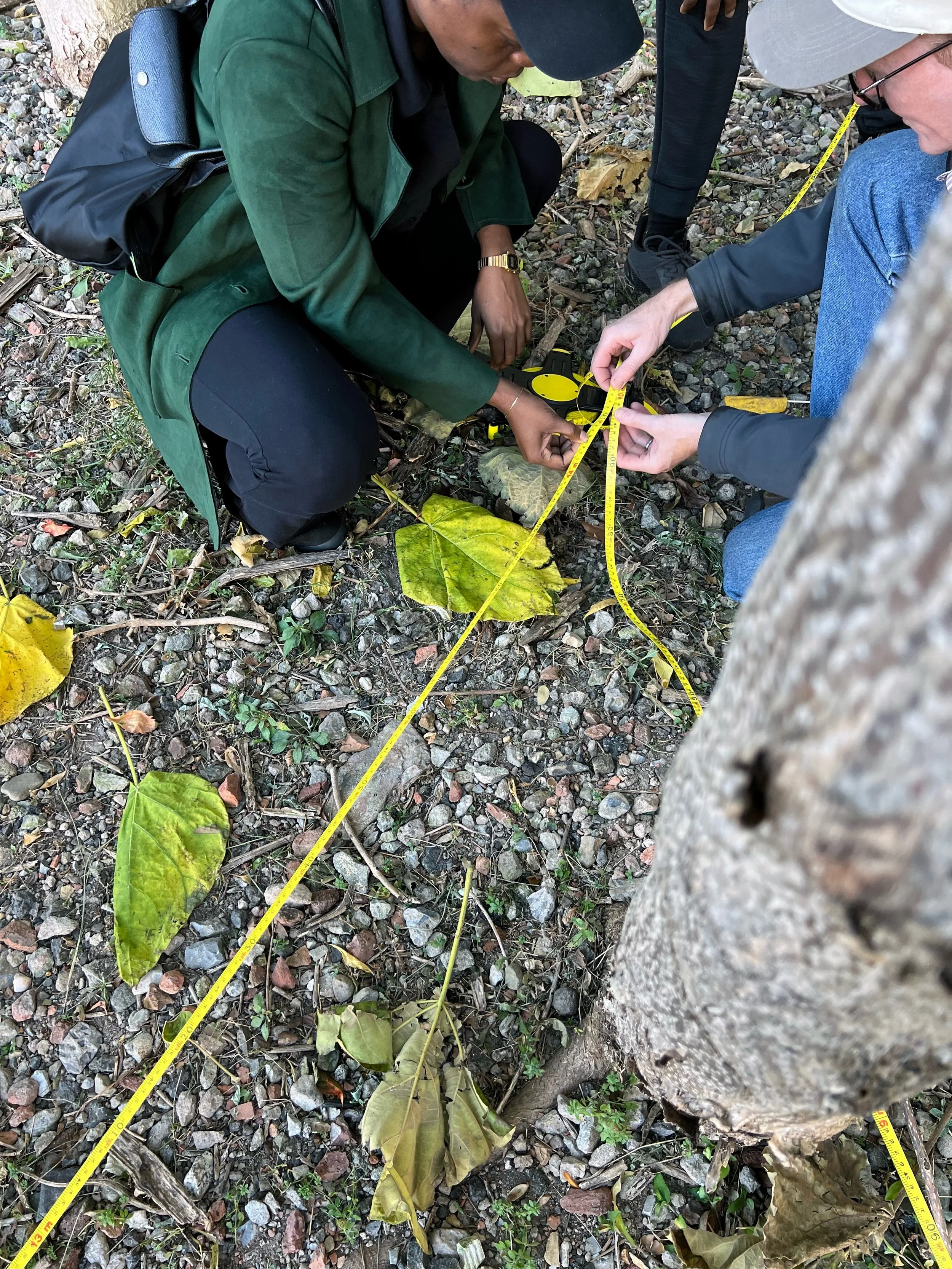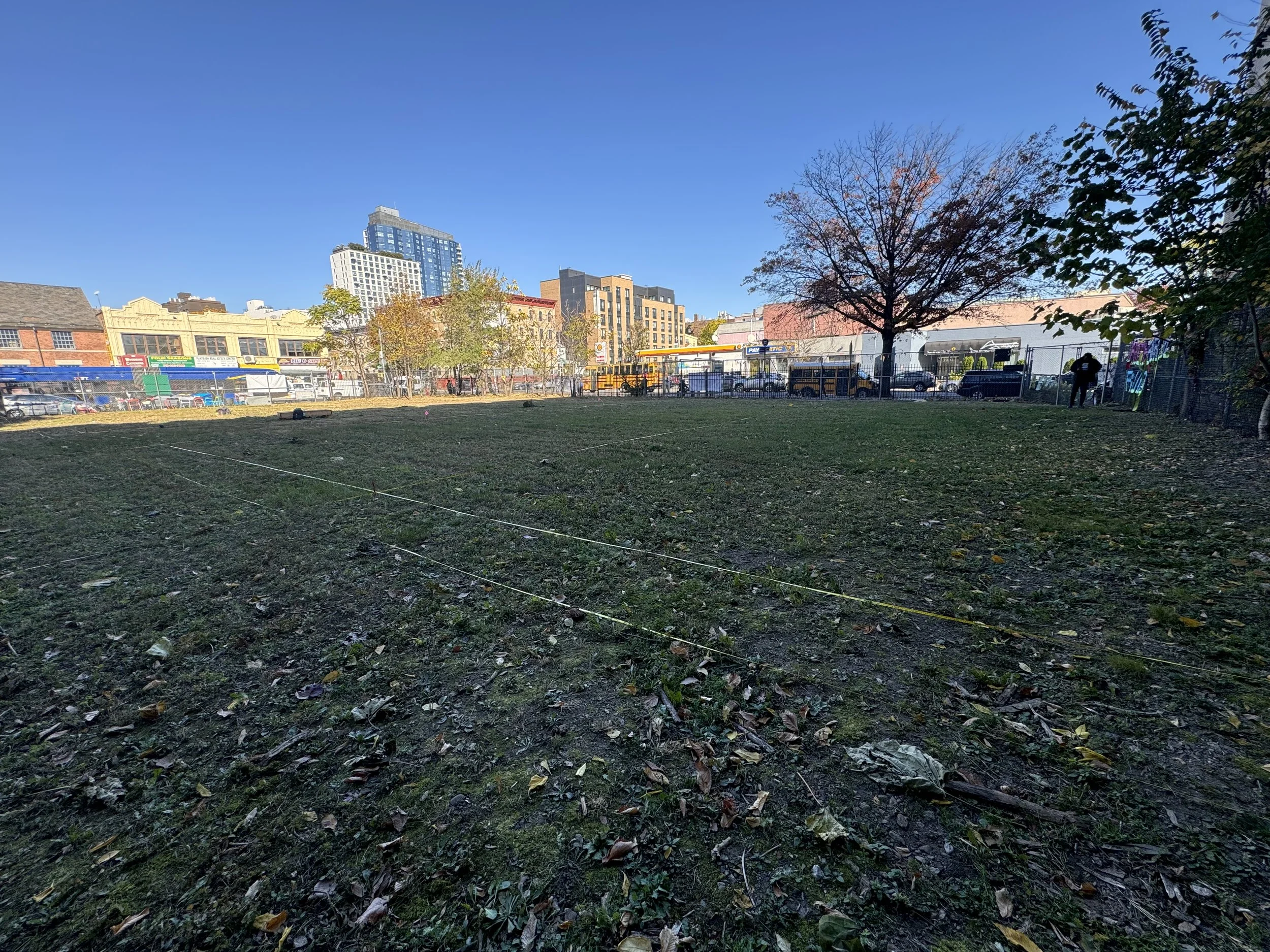
Ground Penetrating Radar (GPR) Results: Church–Bedford Ave.
For generations, the Flatbush African Burial Ground has stood as a sacred site in the heart of Brooklyn—a resting place for free and enslaved Africans whose labor and resilience helped build New York City. Over the past five years, the Flatbush African Burial Ground Coalition (FABGC) has worked to uncover, protect, and honor this important piece of our shared history.
In partnership with archaeological experts, FABGC supported a Ground Penetrating Radar (GPR) study to help better understand what lies beneath the surface of the Church–Bedford site. This project was made possible through funding from the Wenner-Gren Foundation and conducted by Dr. Tim Horsley, whose expertise and careful analysis have provided valuable insights into the site’s complex layers of history.
What the GPR Found
The GPR study successfully identified a range of buried features and deposits related to later historical use of the land. These include remnants of 19th- and 20th-century school buildings, such as Public School No. 1 and Public School No. 90, as well as portions of a 20th-century restroom structure and other foundations under nearby sidewalks.
However, the survey did not identify definitive evidence of burials or a clear boundary of the original cemetery. One anomaly detected in the northeastern corner of the park may represent ground disturbance, but further archaeological investigation would be needed to confirm its origin or historical significance.
What This Means
-
While the findings do not confirm visible burial features, they do not negate the presence—or the power—of this sacred ground. The Flatbush African Burial Ground remains a site of deep historical, cultural, and spiritual importance.
The absence of conclusive evidence in the GPR data reminds us of how often the histories of Black communities were excluded from official records and maps, forcing descendants to rely on oral histories, community memory, and ancestral knowledge. The soil itself still carries those stories.
Regardless of the data, this land deserves protection, reverence, and recognition. It stands as a lasting testament to the endurance and humanity of those who were buried here and to the ongoing commitment of the descendant community that continues to fight for its dignity.
-
Learn More
We encourage you to read the complete findings and watch the recorded community discussion to hear directly from archaeologists, historians, and community members reflecting on what these results mean for the future of the site.
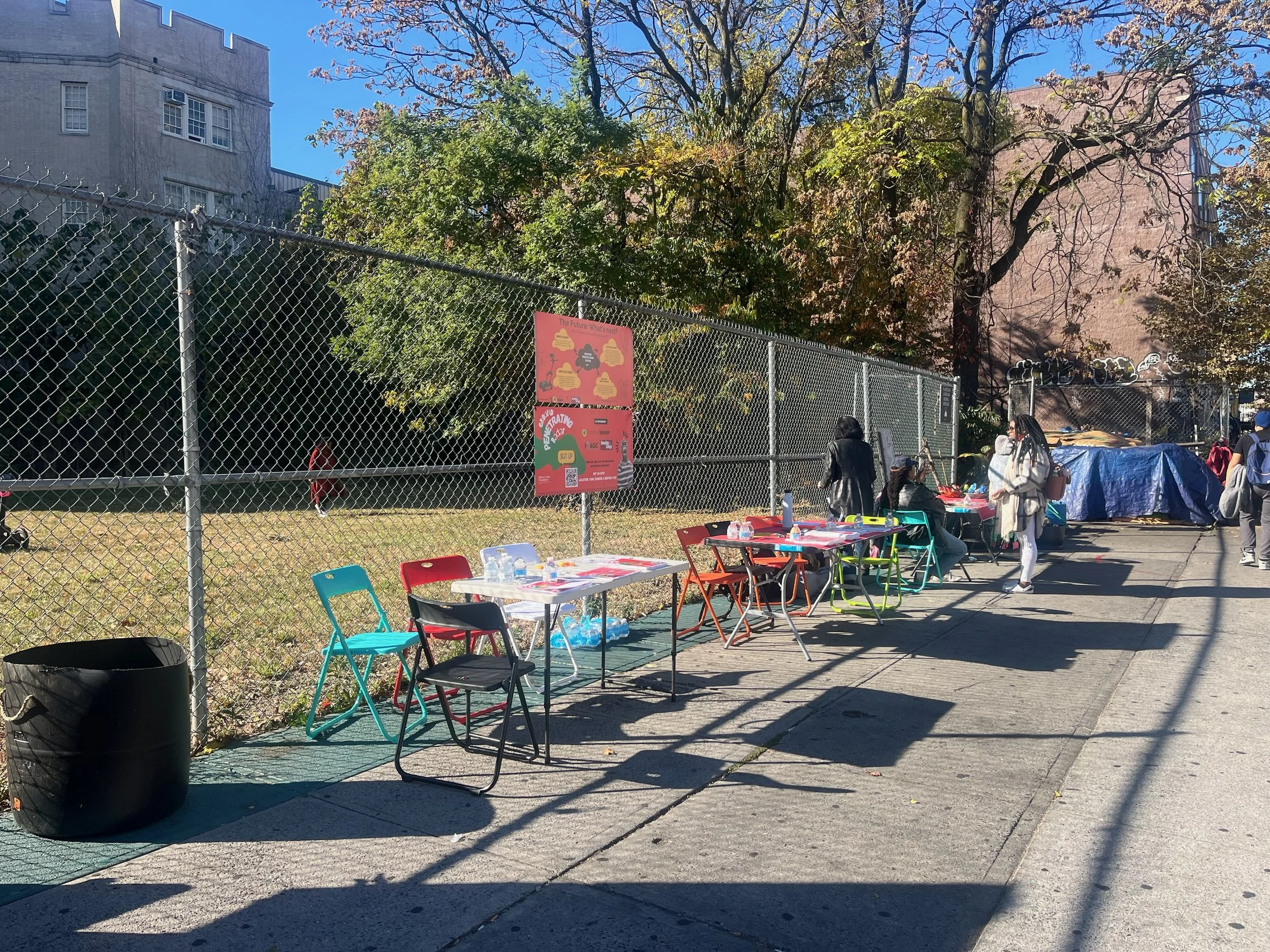
Our Commitment
FABGC remains steadfast in its mission to ensure that the Flatbush African Burial Ground is not forgotten, erased, or overshadowed by development. We call on all New Yorkers—and especially our elected officials—to join us in protecting this site and uplifting the memory of those who rest here.
Together, we honor the past and build a more just future rooted in truth, remembrance, and respect.

